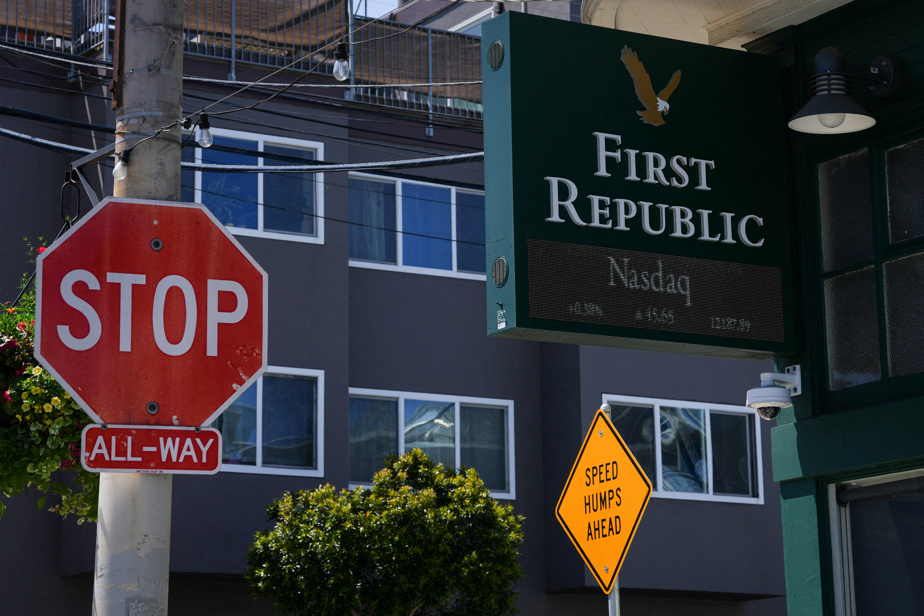(New York) The rescue of the American regional bank First Republic, seized by the American authorities before being largely acquired by JPMorgan Chase, “will help stabilize the system”, estimated Monday the boss of JPMorgan, Jamie Dimon .
While the failures of two other banks in March had shaken the world of finance and taken First Republic into the turmoil, “the American banking system is extraordinarily healthy”, also affirmed the official during a conference call with journalists.
The establishment had been under severe pressure since the close failures last month of two establishments with a similar profile, Silicon Valley Bank and Signature.
But First Republic failed to come up with a satisfactory rescue plan and when it confirmed last Monday that scores of customers withdrew more than $100 billion in deposits in the first quarter, its already struggling stock stung. of the nose.
The authorities, who seemed reluctant to come to the rescue of a third bank in a short time, finally stepped up, soliciting offers from financial institutions before officially seizing First Republic.
This is the second largest bank failure in the history of the United States (excluding investment banks like Lehman Brothers) after that of Washington Mutual in September 2008.
The assets of the latter had also been largely acquired by JPMorgan which, under the leadership of its boss Jamie Dimon, has several times rescued institutions in difficulty.
Under Monday’s deal, the country’s biggest bank will recover all of First Republic’s deposits and nearly all of its assets, while its branches can reopen on Monday as usual.
“Our government called on us and others to intervene, and we did,” Jamie Dimon said in a statement. The operation allows, according to him, to “minimize the costs” for the deposit insurance fund.
The operation implies that the loans of First Republic must be re-evaluated downwards and the agency in charge of guaranteeing the deposits, the FDIC, has agreed to assume part of these losses: it estimates that the operation will cost it about 13 billion dollars, a sum that will come from the contributions paid by the banks.
The Ministry of the Economy said it was “encouraged” by the solution found and, in a press release, ensures that the American banking system remains “healthy and resilient”.
Risks of contagion?
The authorities and other major banks intervened in March to prevent First Republic from experiencing the same fate as SVB and Signature, with eleven financial institutions agreeing to deposit a total of 30 billion dollars there.
But that was not enough to reassure.
First Republic, founded in 1985 and based in San Francisco, was only worth $654 million on the stock market on Friday, against more than $20 billion at the start of the year.
The FDIC and the Department of Economy approached several banks mid-last week to gauge their interest and on Friday granted a handful of them access to First Republic’s detailed accounts.
The bidding process was “highly competitive” and resulted in a transaction “conforming to least cost requirements,” the FDIC said.
First Republic might seem attractive: it was known for having a wealthy clientele, depositing large sums in accounts and repaying loans well.
But many of its customers took fright after the bankruptcies of SVB and Signature. And it had in its accounts a number of real estate loans and investments at fixed rates, which mechanically lost value with the recent rise in interest rates.
The question now is whether the bankruptcy of First Republic will lead to others in a sector shaken by rising interest rates.
Observers were worried about a risk of contagion after the failures of March, which also created turmoil across the Atlantic and accelerated the fall of Credit Suisse.
But these fears have eased somewhat after the publication in the past two weeks by several small and medium-sized banks of solid financial statements.
“First Republic was identified as a problem bank in mid-March and the announcement of its closure is not a new reason to worry,” said Nicolas Veron, economist for the think tanks Peterson Institute for International Economics and Bruegel, before the formalization of the bankruptcy. “If another bank were to prove weak, that would be another problem,” he added.
